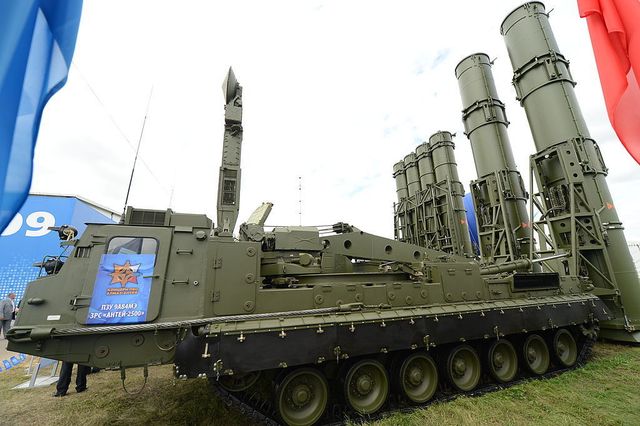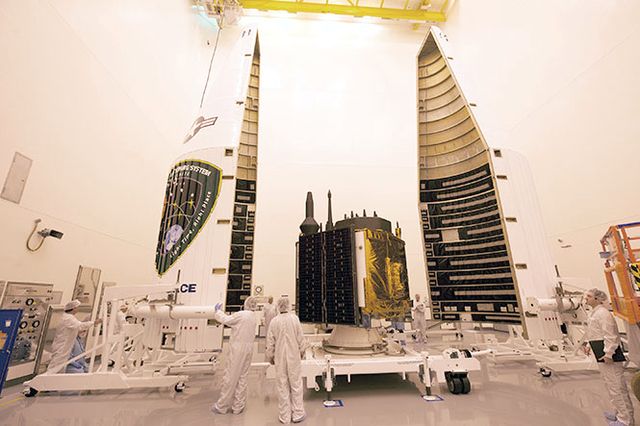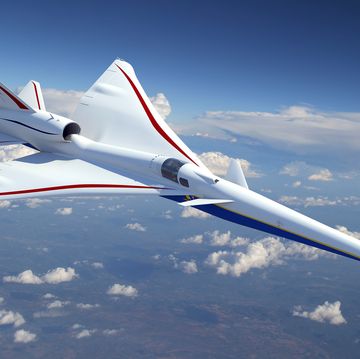Russian aerospace forces conducted test earlier this month of a new anti-satellite weapon system. Once it works, the weapon would be capable of targeting American military satellites, disrupting the Pentagon's satellites for navigation and communications.
The test, conducted on December 16, was the fifth test of the PL-19 Nudol, according to the Washington Free Beacon. The test did not involve an intercept and may have just been to test the capabilities of the lofting rocket instead.
Moscow claims the Nudol is an anti-missile system that engages enemy warheads in the so-called "midcourse phase" after separating from the missile booster needed to reach low-earth orbit. Of course, that's also where satellites are.
An anti-missile system, like the one in the image up above, can be used to target satellites with relative ease. In 2008 , the USA-193, a malfunctioning American spy satellite, was shot down from a decaying low-earth orbit by a SM-3 missile launched by the USS Lake Erie. Like Russia's Nudol, the SM-3 is also a "midcourse phase" interceptor missile.
Russia has been modernizing its forces with an eye toward possible work arounds to America's high-tech capabilities. The U.S. built a ground-based ballistic missile defense system, and the Russians promptly put low-flying nuclear cruise missiles on their submarines—as well as beginning research on a multi-megaton nuclear drone.
In this case, an anti-satellite weapon such as the Nudol could strip away high-flying American satellites, especially Global Positioning System satellites that provide precise navigation coordinates to American air, ground, and sea forces. GPS targeting can also make American weapons extremely precise, often within 15 feet or less of their actual target.
Nudol would also be useful to disrupt American communications satellites, making coordinated action by military forces over vast distances—such as Russia—difficult.
There's no word when Nudol will enter service, but the fast-paced testing schedule suggests it's a priority for Russian forces.
However, Nudol may fall victim to budget pressures as Russian defense spending is set to fall for the first time since the 1990s. A combination of Western sanctions over Russian involvement in the Ukraine and falling commodity prices has plunged the economy into recession, forcing defense cuts. But the Nudol remains a reminder that military equipment is never completely safe, even in the far away recesses of low-Earth orbit.

Kyle Mizokami is a writer on defense and security issues and has been at Popular Mechanics since 2015. If it involves explosions or projectiles, he's generally in favor of it. Kyle’s articles have appeared at The Daily Beast, U.S. Naval Institute News, The Diplomat, Foreign Policy, Combat Aircraft Monthly, VICE News, and others. He lives in San Francisco.














